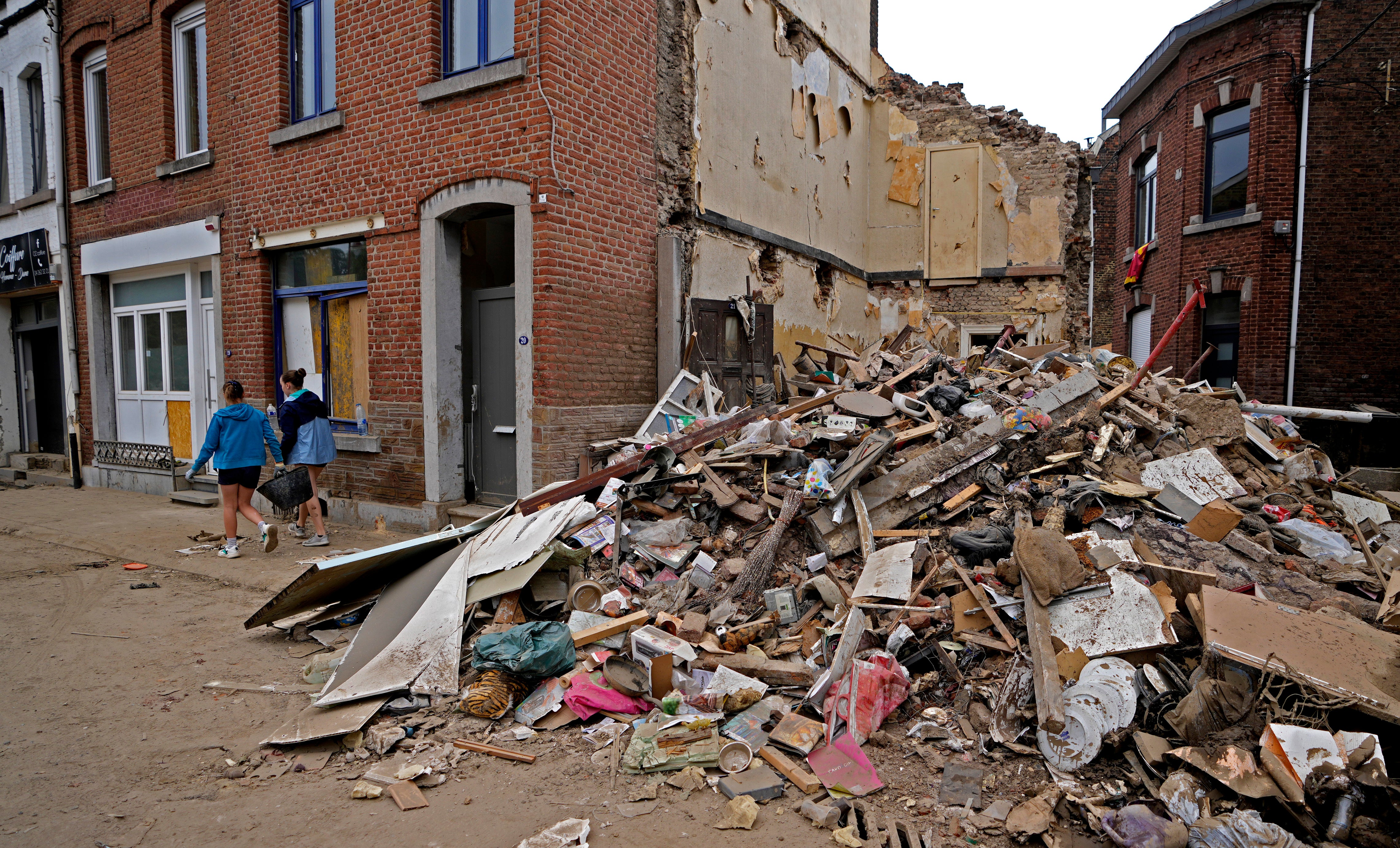Climate crisis made severe rains behind Europe’s 2021 floods ‘up to nine times’ more likely
Last month’s disaster killed at least 220 people in Belgium and Germany
The extreme rainfall that triggered devastating and deadly flooding across western Europe last month was made between 1.2 and nine times more likely by the climate crisis, a rapid analysis finds.
Severe downpours similar to those suffered in countries including Germany, Belgium and Switzerland last month are now 3 to 19 per cent heavier because of human-driven global heating, the research says.
Previous rainfall records were smashed in parts of Germany and Belgium last month, causing rivers to burst their banks and unleash deadly waters.
The unprecedented flooding killed at least 220 people in Germany and Belgium, and caused £4.9bn (€5.5bn) worth of damage in Germany alone.
“Climate change is hitting us everywhere now,” Dr Maarten van Aalst, one of the research authors and director of the international Red Cross Red Crescent Climate Centre, told a press briefing.
“I hope it’s a wake-up call to not just people that have been affected, but people elsewhere [too].
“We are facing more extreme events of many kinds, and the only thing we can do is to close the tap of increasing greenhouse gas emissions ... and to prepare for the more extreme climate that we live in.”
Similar rainfall events are currently expected to occur around once every 400 years for any given region in western Europe, the analysis says.
“Even with climate change, this was a very rare event,” said Dr van Aalst.
“But this is just one event in one place that is happening every 400 years. If you look around the world, we’re going to be seeing many of those things that only happen once every 400 years.”
Climate change is hitting us everywhere now ... I hope it’s a wake-up call to not just people that have been affected, but people elsewhere
The analysis is the latest from the World Weather Attribution initiative, a group of researchers tracking the fingerprint of the climate crisis on extreme weather events.
To understand the role of global heating in Europe’s recent floods, the team of 39 scientists made use of past weather records and climate models.
For their analysis, the team focused on rainfall data rather than river level records. One reason for this is that some river measurement stations were destroyed by the flood, said study author Dr Enno Nilson, from Germany’s Federal Institute of Hydrology.
“Parts of the measurement system were destroyed, but we tried our best to collect information,” he told journalists.
For the first part of their analysis, the team studied extreme rainfall in two of the worst affected regions. This included near the rivers Ahrs and Erft in Germany, where more than 93mm of rain fell on one day in July, and near the river Meuse in Belgium, where 106mm of rain fell over two days.
For the second part of their analysis, they examined how the climate crisis has changed the likelihood of such extreme downpours in a wider area including France, Germany, Belgium, the Netherlands, Luxembourg and Switzerland.
To do this, they used climate models to examine the chances of such extreme rainfall occurring in today’s world, which is 1.2C warmer than in pre-industrial times, with a hypothetical world without human-caused climate change.
The results show that such events have become 1.2 to nine times – or 20 per cent to 800 per cent – more likely because of the climate crisis.
And, if global temperatures reach 2C above pre-industrial levels, such extreme rain would become a further 1.2 to 1.4 times more likely, according to the analysis.

The climate crisis is making extreme rainfall more likely in two major ways, the scientists said. First, a warmer atmosphere can hold more rainfall – with every 1C of temperature rise allowing the air to hold around 7 per cent more moisture.
Second, the climate crisis is causing atmospheric circulation patterns to shift, leading to changed and less predictable rainfall patterns.
“These floods have shown us that even developed countries are not safe from severe impacts of extreme weather that we have seen and known to get worse with climate change,” said analysis author Dr Friederike Otto, who is associate director of the Environmental Change Institute at the University of Oxford.
“This is an urgent global challenge, and we need to step up to it. The science is clear, and has been for years.”
The research is not published in a scientific journal but uses peer-reviewed methods.
Prof Hannah Cloke, a natural hazards researcher at the University of Reading, who was not involved in the research, said the findings reinforced the need to strengthen flood defences in European countries.
“Individuals, local authorities and governments still have the power to make specific, local changes that can save lives and protect property from the worst impacts of floods,” she said.
“We must tackle climate change, or these problems will only get worse in the future.”
Join our commenting forum
Join thought-provoking conversations, follow other Independent readers and see their replies
Comments
Bookmark popover
Removed from bookmarks